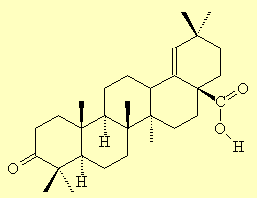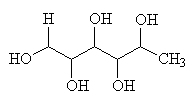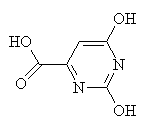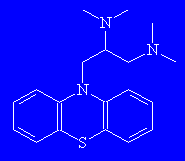Some of my favorite molecules with Silly Names. See all of them here, including information on his upcoming book release.
Curious Chloride and Titanic Chloride
The trivial name for some curium compounds can be either curous or 'curious', so curium trichloride becomes curious chloride. However the only curious property it has is that it's sufficiently radioactive that a solution, if concentrated enough, will boil spontaneously after a while. (I wonder if a molecule with 2 Cm atoms in would be 'bi-curious'...?)
In a similar way, titanium compounds can be 'titanic', so we get the wonderfully named titanic chloride, TiCl4. It's also interesting to know that in the titanium industry, TiCl4 is known as 'tickle'. Furthermore, curium oxides are called 'curates', so the titanium compound would be Titanic Curate, and since curium can have more than one valency we could end up with Curious Curates. But I'm sure these are already a well-known phenomenon...
In a similar way, some nickel compounds can be referred to as 'nickelous' - so we get compounds like Nickelous Sulfate (a nice guy by all accounts...)
Moronic Acid
This is a triterpenoid organic acid that is found in Pistacia resin, and is therefore of interest to people studying archaeological relics, shipwrecks and the contents of ancient Egyptian jars. Its name comes from its corresponding hydroxy acid, which was originally named morolic acid since it was isolated from the heartwood of the mora tree, mora excelsa. The keto acid then became moronic acid. Derivatives of this are called moronates, as in 'which moron-ate the contents of this jar?'
Fucitol
Although this sounds like what a chemist might exclaim when their synthesis goes wrong, it's actually an alcohol, whose other names are L-fuc-ol or 1-deoxy-D-galactitol. It gets its wonderful trivial name from the fact that it is derived from the sugar fucose, which comes from a seaweed found in the North Atlantic called Bladderwrack whose latin name is Fucus vesiculosis. Interestingly, there are a few articles in the Journal of Biochemistry throughout 1997 concerning a kinase enzyme which acts on fucose. The creators of these articles were Japanese, and seemed to have missed the fact that fucose kinase should not be abbreviated as 'fuc-K'. Similarly, the E. coli K-12 Gene has other proteins that have been named Fuc-U and Fuc-R. Recently, the abbreviation for fucose-kinase enzyme has been cleaned up to 'FUK'. However, there are now clones of this where the cloning position in the DNA sequence is labelled by its Open Reading Frame (ORF) number. And of course, these clones are called FUK ORF!
Erotic Acid
No, this isn't the world's best aphrodisiac. Its correct name is orotic acid, but it has been misspelt so often in the chemical literature that it is also known as erotic acid! Another name for it is vitamin B13. Apparently, if you add another carbon to it, it becomes homo-erotic acid...
Spamol
Monty Python's favourite molecule? Spamol might also conjure images of unwanted "Make Money Fast" emails circulating the globe at the speed of light ("spam - all"). Its other names are aminopromazine, lispamol or lorusil, and it's actually used as an anti-spasmodic therapeutic agent.



